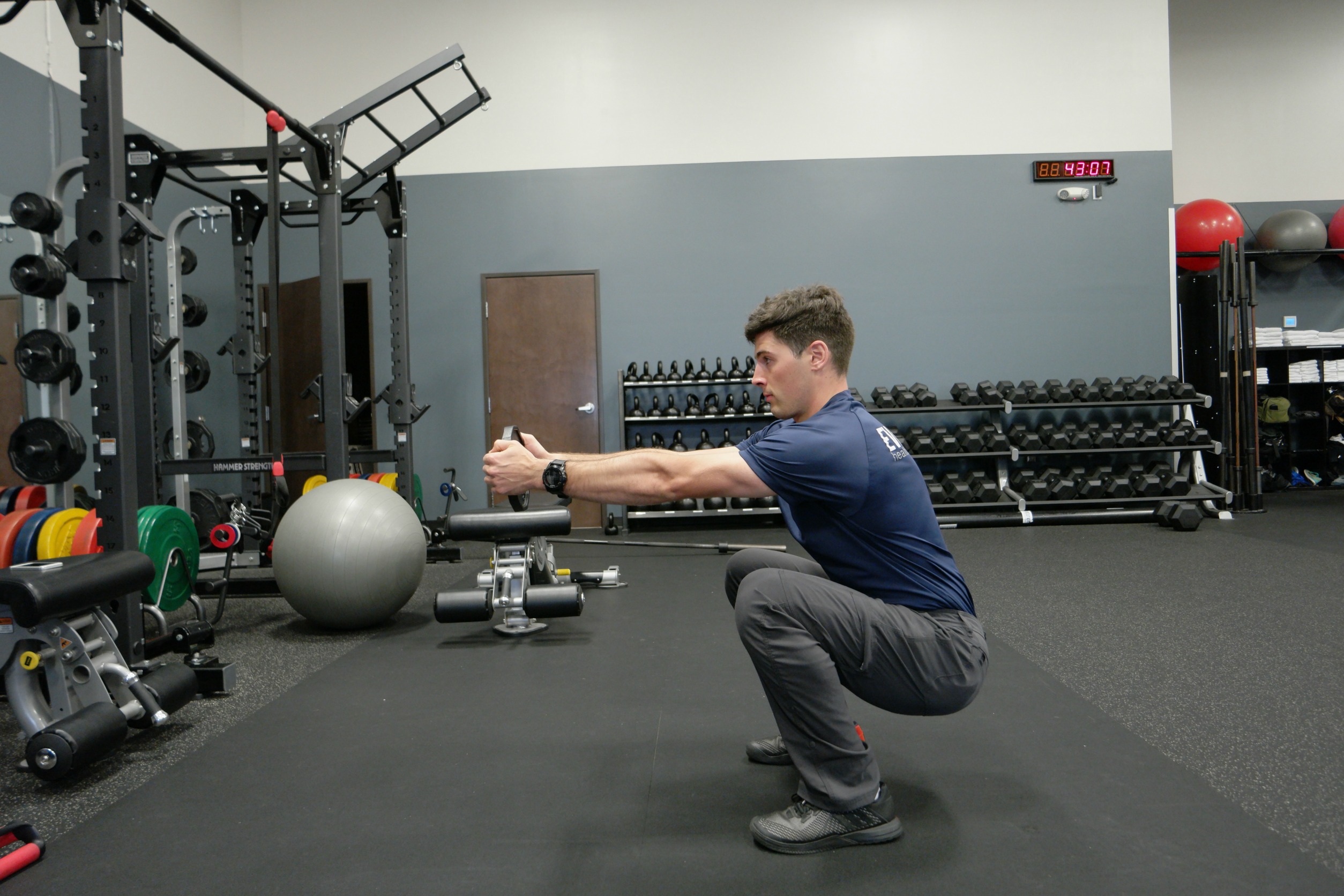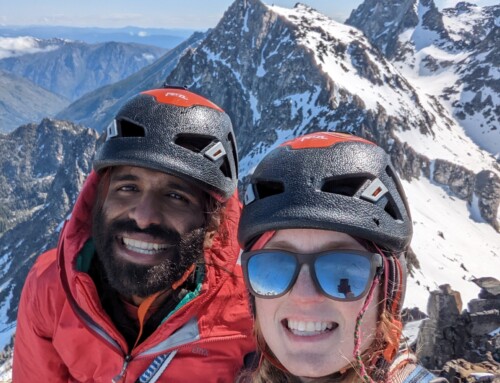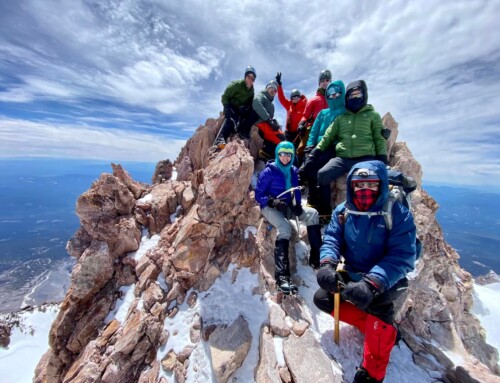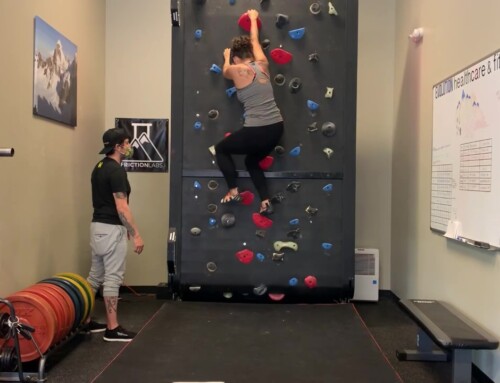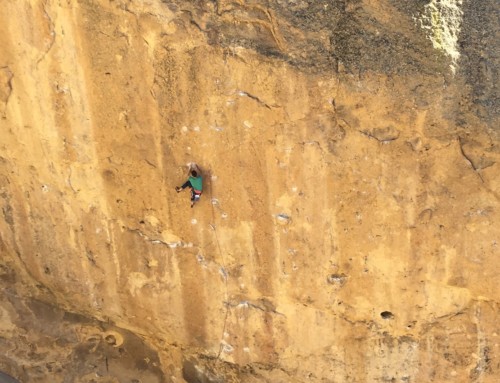The squat. One of the “Big Three” lifts and the lift that everyone should be doing to express overall strength and mobility. The fact that the squat is such a vital exercise in building athleticism, strength, and overall health is something that almost all coaches can agree on. But, as far as things to look for when coaching the squat, cues for the athlete, and variation go, things get pretty murky. In this post I’m going to look into and share my opinion of some squat nuances.
Before moving to Portland, I was fortunate enough to participate in an internship at Indianapolis Fitness and Sports Training or IFAST as its more commonly known. Having the opportunity to work closely with Mike Robertson, Bill Hartman, and their staff of sharp-as-a-whip coaches was equivalent to learning how to ride a bike then graduating to a Ducati when it came to seeing and coaching movement.
Every single client has different needs based on their genetics, the past experience, injuries, and more. However, there are a few general things I look for when coaching most of my clients. The following Top 3 dig into some things I’ve learned and some of my own justification on how I like to coach the squat.
#1 Hips Underneath and Breathe!
Now this may seem intuitive to anyone reading this, you can’t squat heels overhead, that’s a handstand. What I’m getting at is keeping your hips underneath your ribcage. When our torso is balanced over our pelvis, our diaphragm operates most efficiently. Subconsciously, every person on Earth has the primary objectives of breathing and protecting their central nervous system (CNS), so that they can carry out the business of life.
Too often people are squatting from a state of complete extension through their spine. This over extension results from sensory feedback and the body’s need for some stability. Sure, this extension creates some rock-solid passive stability but it limits movement and breathing. Try over extending your spine and rotating through your ribcage. Now, try maintaining a long and neutral spine and rotate. Again, do the same exercise but test with a deep breath through your nose rather than rotation. You tell me which seems easier.
If you add a heavy load as a stressor to this extended spine you’re on the fast track to wiring a locked-up movement pattern that results poor mobility and aberrant breathing patterns: chest breathing, neck breathing, and shallow breathing. Further, excessive extension results in the delicate facet joints bearing the lion’s share of the load as opposed to the broad and robust vertebral bodies.
Lastly, in the heat of competition or moments of high stress, when your body requires oxygen and movement options your CNS will utilize what it knows. What your CNS knows best tends to be the positions that it most often commands under stress. Training is a stressor that we control and it should be controlled in a manner that allows us to access optimal breathing and spinal positions not only for sake of performance but health and longevity. So, if you’re over extended when squatting heavy and the game is on the line will you be able to make that cut past a defender when short of breath and from a locked-up position? Or, will you explode past in any direction you choose because you are balanced, breathing well, and moving with agility?
By keeping your hips underneath your ribcage, you achieve a neutral spine and provide your abdominal musculature the ability to stabilize the spine. Squatting, with a neutral spine and highly active abdominals, sends your CNS proprioceptive feedback from your body that your central nervous system is stable and the movement can proceed and breathing is controlled and optimal.
To activate your abdominals and get your hips underneath your ribcage while squatting, try these cues:
Start with soft knees – this helps bring the pelvis underneath the rib cage.
EXHALE – A strong exhale *sigh* from the mouth activates deep abdominals in this position.
Sit down, not back – This allows for triple flexion at the ankle, knee, and hip. This position potentiates triple extension and trains proper absorption of force when landing from a stride or jump.
Push the floor – This takes any back movement out of the ascent. If we push the floor rather than stand up, triple extension is generally easier to achieve with a neutral spine.
#2 – Feel Your Whole Foot
It’s all about balance with the teeter-totter of the foot. The heel is either the sole part of the foot mentioned or no cue at the foot is given.
I prefer for my clients to feel their entire foot. Pushing the whole foot allows for appropriate transmission of force from our body to the surface on which we are performing. However, many clients either come off their heels at the bottom of the squat OR hinge rather than squat and find themselves with a forward trunk lean and a weighted forefoot, in a very deadlift-esque squat.
I coach clients to feel their whole foot. I encourage an appropriate amount of dorsiflexion through the squat and a balanced bottom position. This carries over to landing position following a dynamic movement, and you allow a stable foot produce force.
Due to the nature of a squat, I find that the trunk position inherently allows for a client to push through there heels and find that cue to be unnecessary.
When feeling the entire foot, you get a more upright torso, inhibition of chronically tight calf musculature, and you get flexion in areas of the body that are often chronically extended. This position allows for an athlete to move themselves or weight in the sagittal plane. It also allows for them to push off either foot in either direction. Additionally, when the whole foot is felt the knee operates in a more favorable position than from a collapsed arch or from feet spun externally.
#3 – Hips, Knees, Toes inline
A current fad these days is to drive the knees out HARD when squatting. You’ll often hear the cue as “knees out” or “spread the floor”.
This is an excellent strategy if you’re a powerlifter grinding out a PR and need every newton of force stabilized by any means at whatever stake. But, these are things I hardly find myself asking a client to do. The reason I don’t like driving the knees out is because it relies heavily on ligamentous and skeletal stability (i.e. passive stability over active stability) through the hips. Essentially the same principle as item #1, but at the hip joint. Again, if you’re a powerlifter that needs every bit of muscular recruitment to move the weight of an ox in a single plane, by all means go with knees out.
However, if I’m coaching anyone else hips, knees, and toes in line is the way we go. When the lower extremity stays in line, you allow for proper arthokinematics at the hip joint. I invite you to use a bone model and move the femur though flexion and extension. What you’ll notice is that the best joint congruency isn’t with a fully externally rotated femur.
Muscularly, I avoid shortening hip external rotators, inhibiting internal rotators, and stretching out the anterior hip capsule. All are things that limit movement options and create unbalanced joints. Further, quadriceps are in an optimal position to extend the knee with the knee over the midfoot. The adductors are also positioned to help with flexion and extension when they are not passively insufficient due to excessive abduction and external rotation of the femur.
Most importantly, you stay athletic. With everything lined up and a lowered center of gravity you attain an athletic position. You allow yourself movement options in three planes of motion, and you train the quadriceps in a manner that allows them to act functionally as forceful extenders of the knee while running and jumping as well as a set of functional brakes when changing direction or stopping.
Look at the ready position or any defensive back in the NFL, any soccer player in the MLS, or the short stop of any MLB club. What you’ll notice is they are in a squat. What you will also notice is that they are hips, knees, and feet in line. Ready to make a play. So, lets train our strength in positions from which we can make plays.
Squat the Bottom Line
I find the squat to be one of the most effective exercises in increasing a client’s mobility, strength, and feeling of overall athleticism. I respect the squat most for its profound effect on the nervous system and our performance under stress or competition. Therefore, I take great care when coaching the movement and am meticulous with movement detail and loading the exercise.
I train my clients to meet their goals but also allow for them to access as much movement as possible. The above points of focus are tips I have used to get results for my clients, keep them healthy, and improve their performance. I hope that you, too, find them useful and/or though provoking.
So Many Squat Variations
There are almost endless variations on the squat. Here are photos of just two.
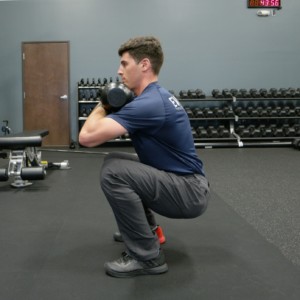
Front squat with racked kettlebells.
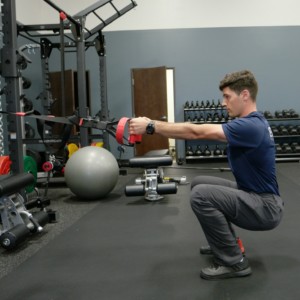
Front squat with assistance from a suspension trainer.
About the Author, Sebastian Saur
Currently Sebastian is a first-year physical therapy student at Pacific University and is loving the outdoor offerings of the Pacific Northwest. He enjoys meeting and coaching people of all sorts. He is particularly invested in people that want to improve their performance in things that make them happy. Whether that be climbing, playing sports, spending time being active with family, or becoming a more fit version of themselves. Your goals are his goals. Sebastian is a Certified Strength and Conditioning Specialist through the NSCA. He has had the privilege of working under Mike Robertson and Bill Hartman, two nationally recognized strength and conditioning coaches based out of Indianapolis. Sebastian’s style of training uses workouts that address power, strength, conditioning, recovery, and nervous system balance while using movements that emphasize triplanar motion. You can schedule a free consultation with a personal trainer, here.

